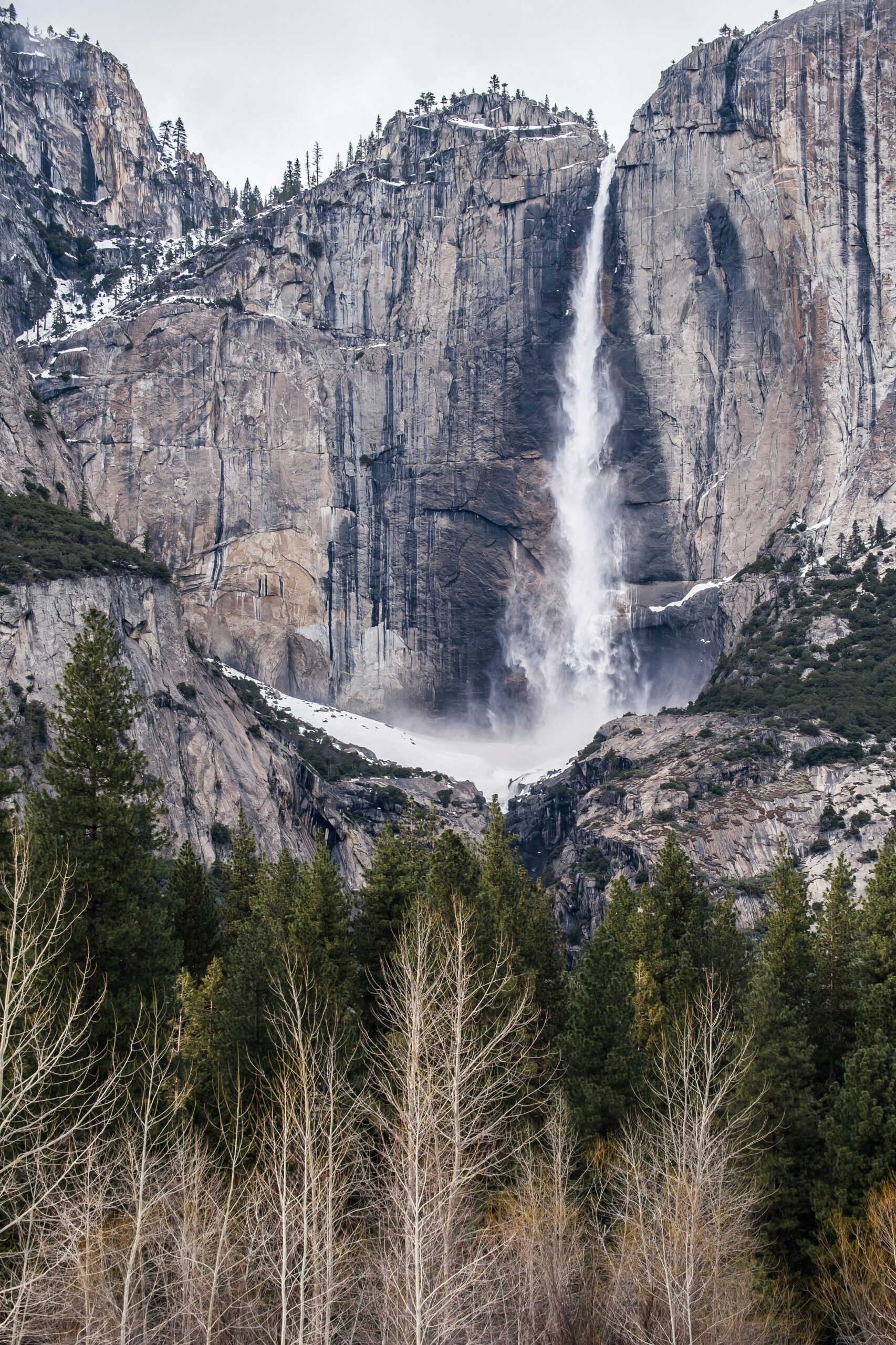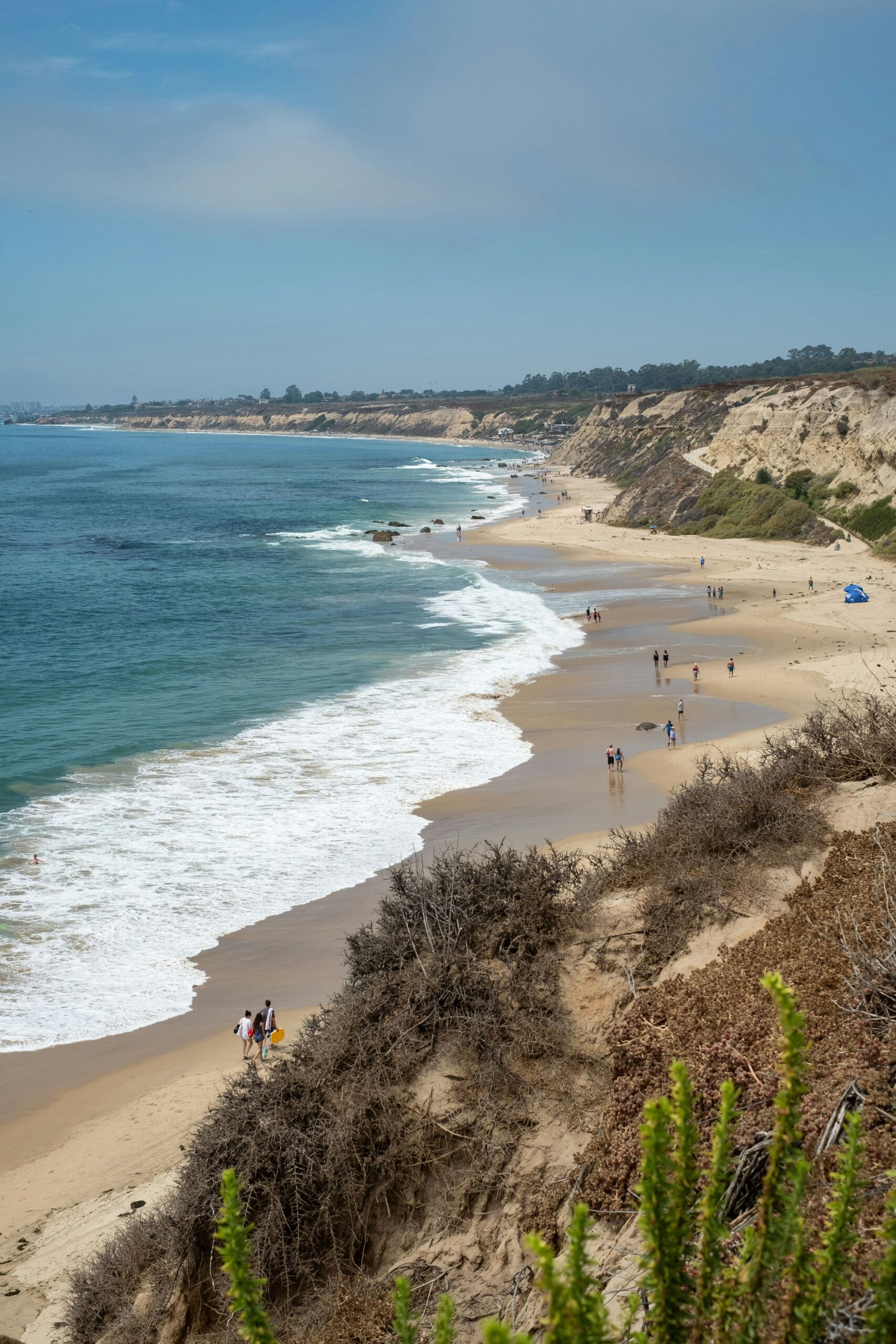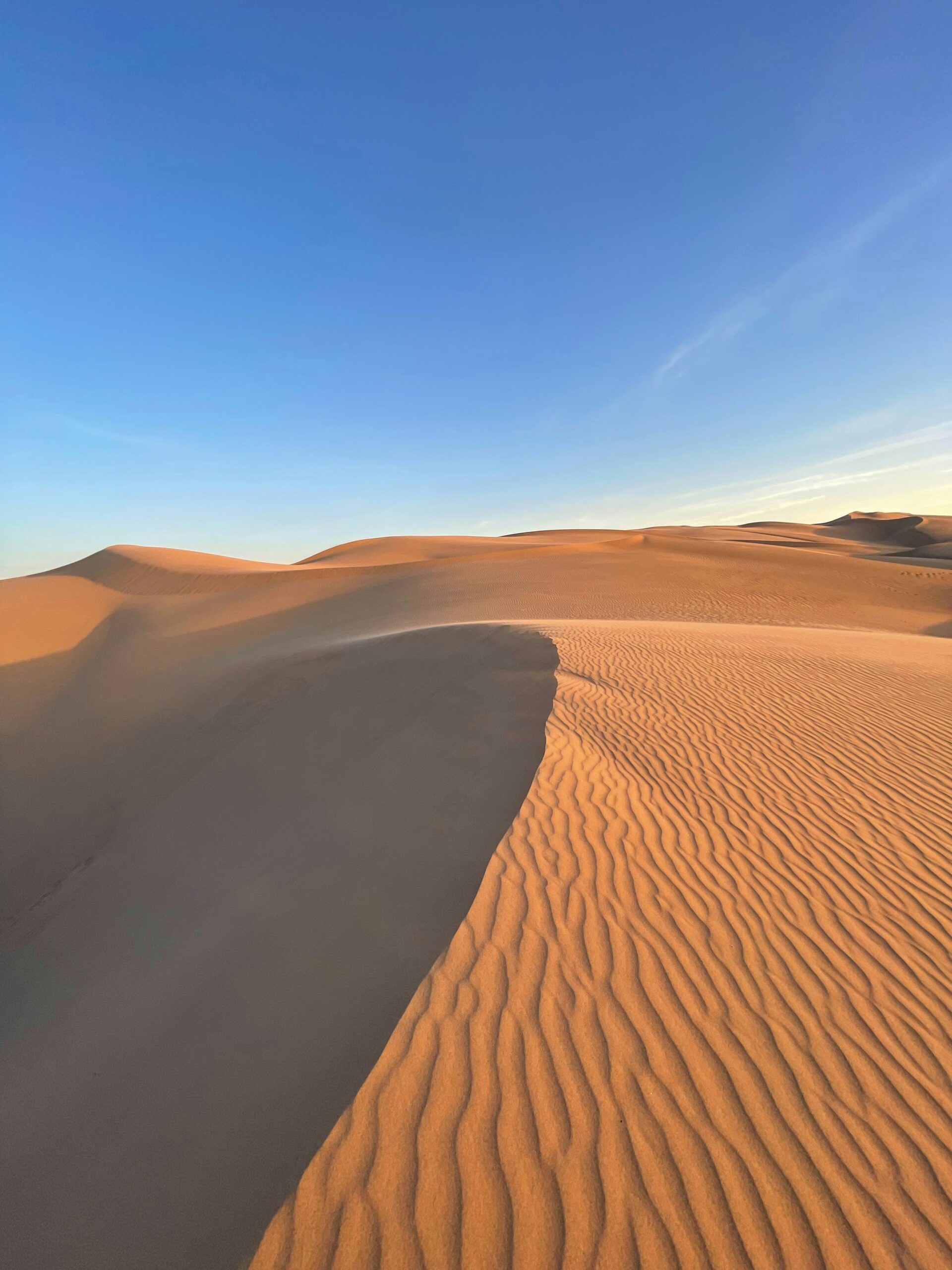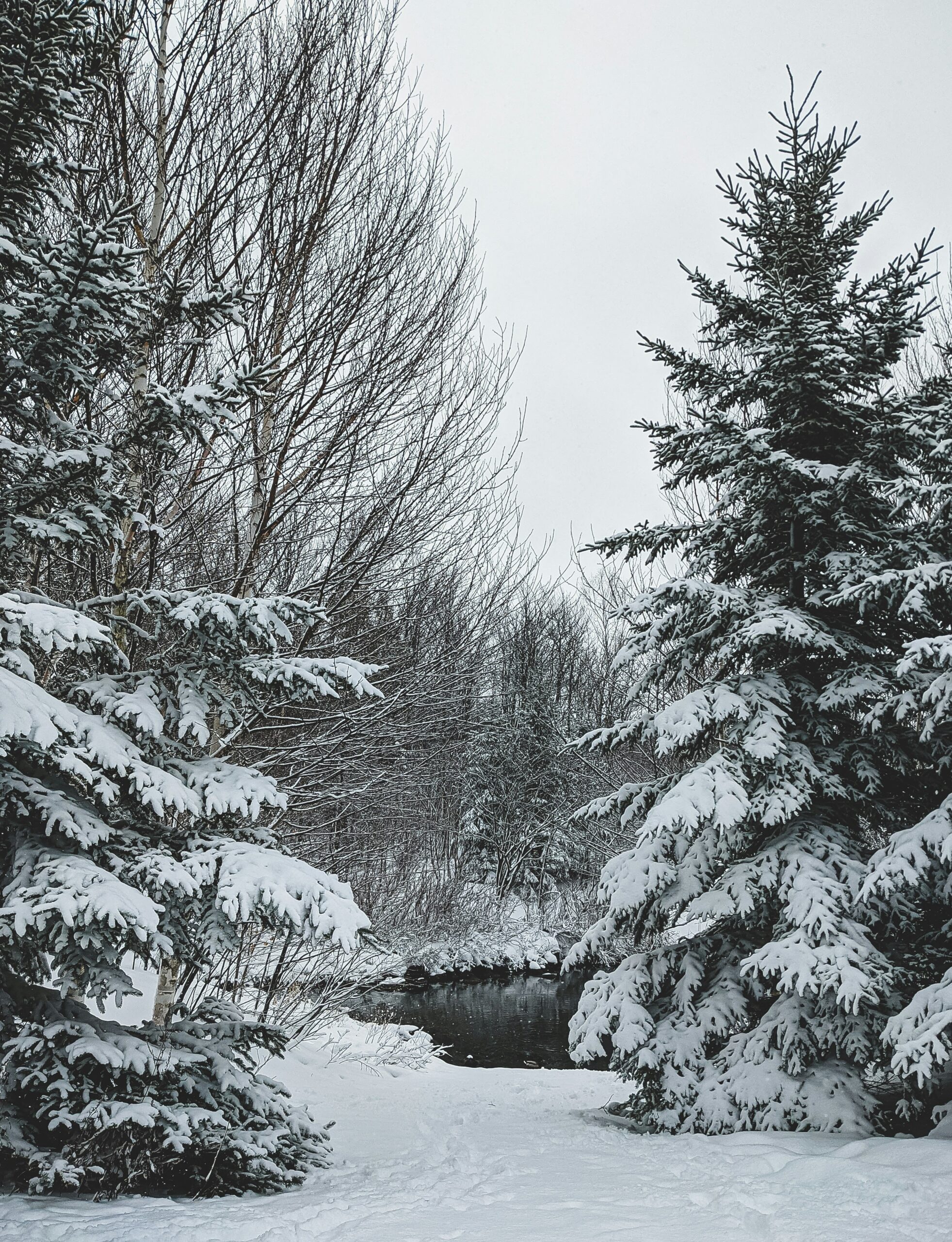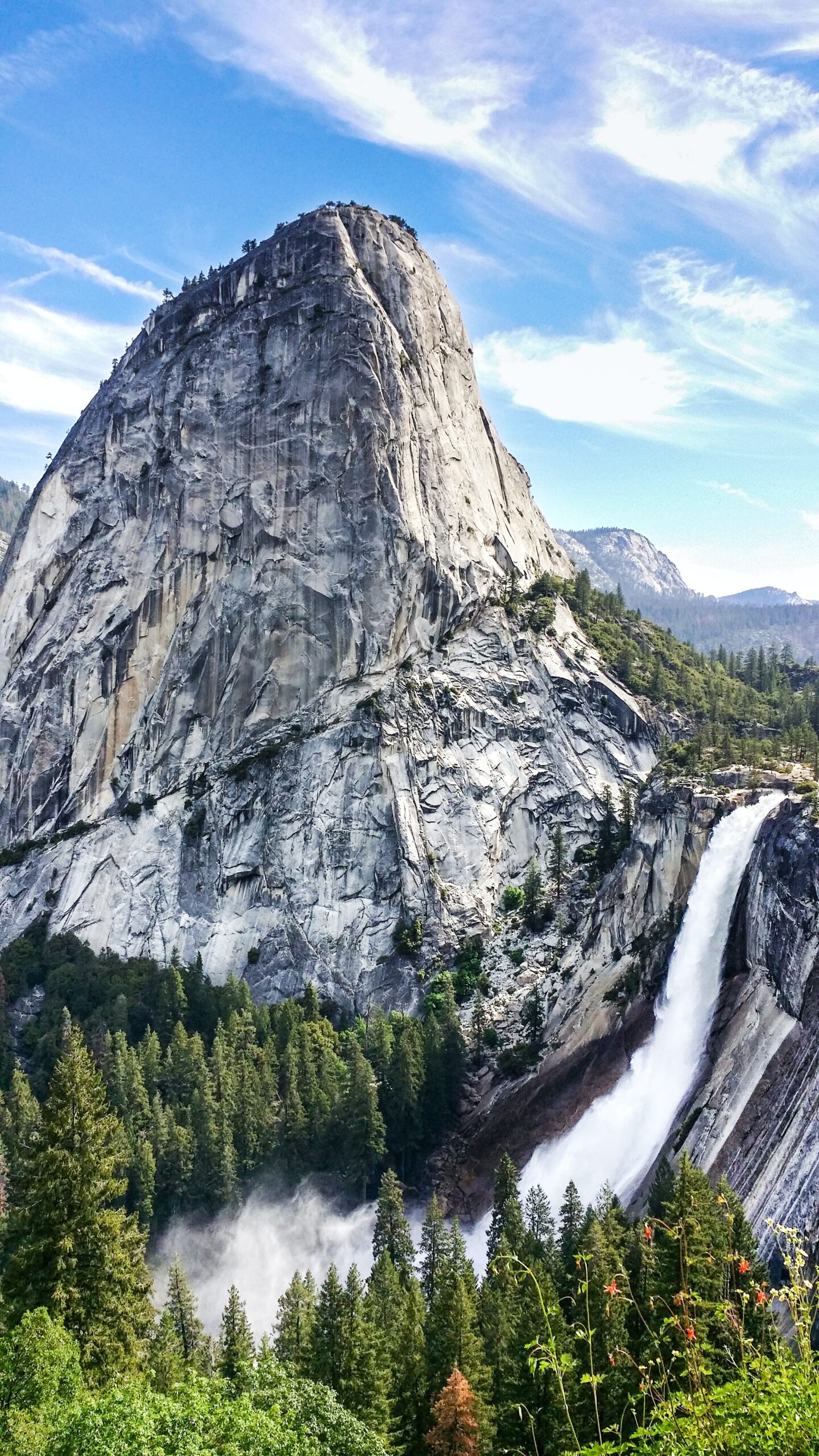Travel Yosemite – Park Travel Guide: Essential Tips for Your 2025 Adventure
Yosemite National Park stands as a testament to nature's grandeur in California's Sierra Nevada mountains. Your visit to this 1,200-square-mile natural wonderland will immerse you in breathtaking landscapes featuring towering waterfalls, ancient sequoia groves, and iconic granite cliffs.
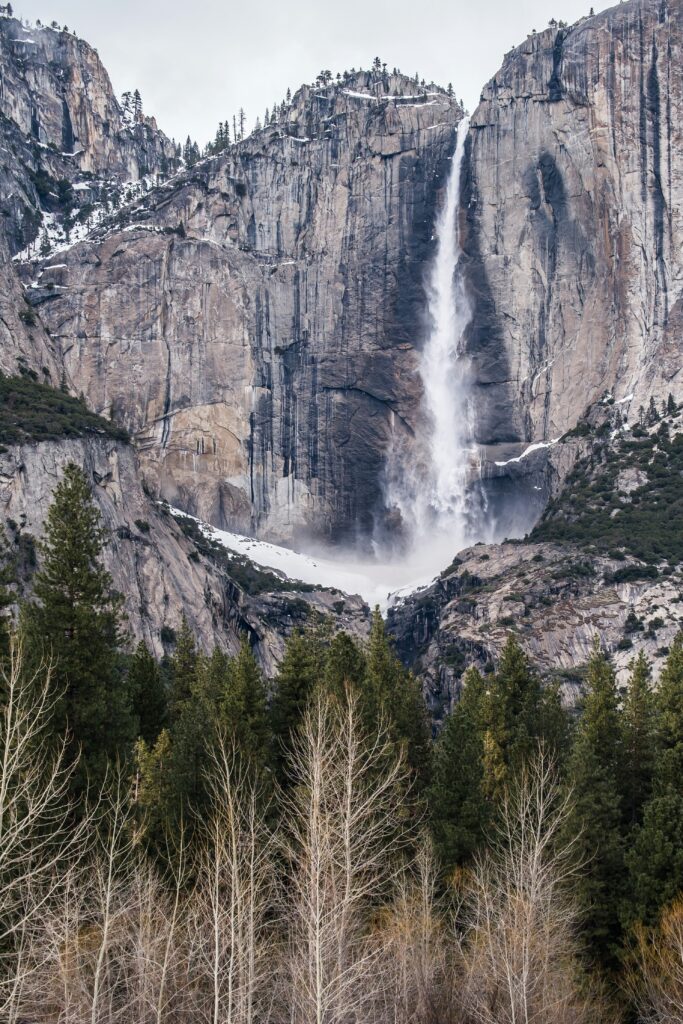
Planning your trip to this UNESCO World Heritage site requires careful consideration of seasonal activities and accommodations. The Yosemite Mountaineering School & Guide Service offers expert-led adventures that can take you from valley floor to mountain peak, while the park's extensive trail network caters to hikers of all skill levels.
You'll find detailed information about facilities and scheduled events in the official Yosemite Guide, which you'll receive upon entering the park. From camping under starlit skies to exploring historic lodges, your Yosemite experience can be customized to match your preferred adventure style.
Travel Yosemite – Park Travel Guide: Essential Tips for Your 2025 Adventure
Planning Your Visit
Visiting Yosemite requires careful planning to maximize your experience and avoid common pitfalls. Making advance reservations and knowing when to visit will significantly enhance your trip to this magnificent park.
Best Times to Visit
Peak season runs from April through October, bringing the largest crowds and warmest weather. Summer offers full access to all park areas but draws millions of visitors.
Spring showcases spectacular waterfalls and blooming wildflowers. May and June provide ideal conditions for hiking and climbing.
Winter transforms Yosemite into a serene wonderland with fewer visitors. Many roads close, but you can enjoy skiing at Badger Pass and stunning snow-covered vistas.
Fall brings comfortable temperatures and smaller crowds, making it perfect for hiking and rock climbing. September and October offer clear skies and excellent photography conditions.
Reservations and Permits
You must secure an entrance reservation during peak hours (9 am – 5 pm) from spring through fall. Book your reservation up to three months in advance.
Wilderness permits are required for overnight backcountry trips. Submit applications 24 weeks before your planned visit date.
Half Dome permits are distributed through a lottery system. Apply in March for the summer season.
Accommodations Options
Yosemite Valley Lodge offers convenient access to major attractions and comfortable rooms year-round.
Rush Creek Lodge provides modern amenities and a spa, located just outside the park's west entrance.
Evergreen Lodge combines rustic charm with upscale comfort, featuring private cabins and organized activities.
Camping options range from developed campgrounds to primitive sites. Reserve campsites up to five months in advance, especially for summer stays.
Navigating the Park
Arrive before 9 am or after 5 pm to avoid traffic congestion. The free shuttle system operates year-round in Yosemite Valley.
Park your vehicle at designated lots and use shuttles to reach major attractions during peak season.
Download offline maps before your visit, as cell service is limited within the park.
The Yosemite Valley loop offers easy access to iconic sights like Half Dome and Yosemite Falls. Consider exploring less-visited areas like Hetch Hetchy and Tuolumne Meadows to escape crowds.
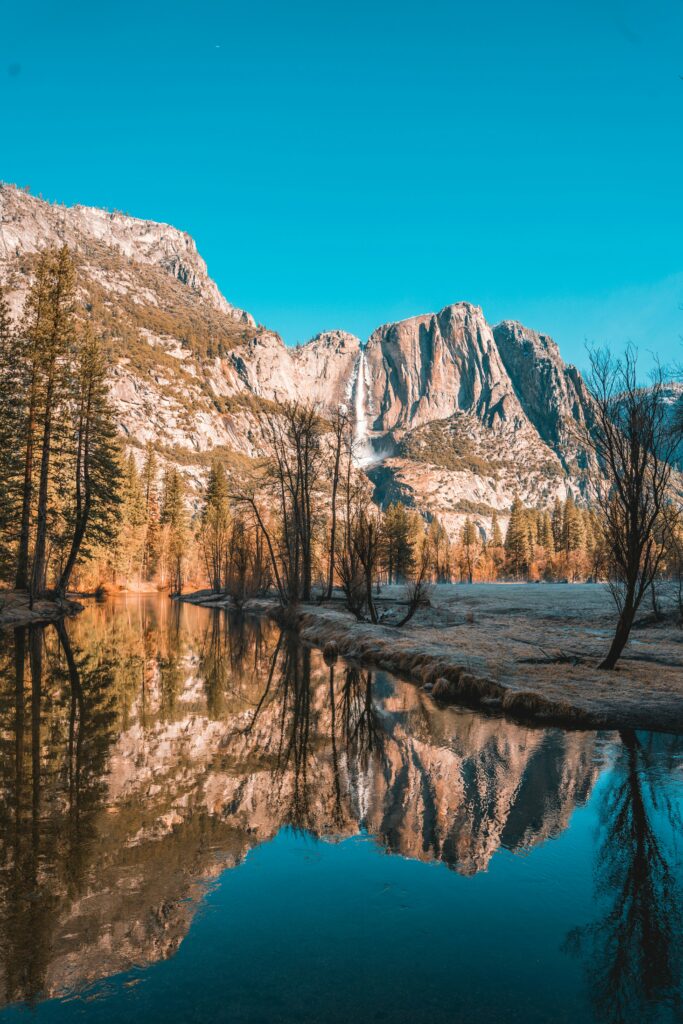
Iconic Landmarks of Yosemite
Yosemite National Park's legendary landmarks span over 1,200 square miles of the Sierra Nevada mountain range, featuring towering granite cliffs, thundering waterfalls, and ancient sequoia groves that draw visitors from around the world.
Yosemite Valley and its Sights
The heart of Yosemite Valley offers spectacular views at every turn. You'll find the best vantage point at Tunnel View, where you can capture the entire valley in one sweeping vista.
The Valley floor stretches 7 miles long and 1 mile wide, surrounded by massive granite walls that rise thousands of feet into the sky.
Historic structures dot the landscape, including the wooden Yosemite Chapel which stands against a backdrop of soaring cliffs.
Granite Marvels: El Capitan and Half Dome
El Capitan rises 3,000 feet from the valley floor, presenting a sheer granite face that attracts climbers worldwide. You can spot climbers on its face throughout the climbing season.
Half Dome stands as Yosemite's most recognizable symbol. Its distinctive shape features a smooth granite face on one side and a rounded top that appears cut in half.
You can hike to Half Dome's summit via the cables route during summer months, but you'll need a permit and excellent physical fitness for the 14-16 mile round trip.
Majestic Waterfalls of Yosemite
Yosemite Falls drops 2,425 feet in three dramatic sections, making it North America's tallest waterfall. Peak flow occurs in spring when snowmelt feeds its thundering cascade.
Bridalveil Fall plunges 620 feet and greets you as you enter Yosemite Valley. Its mist often appears to be blowing sideways in the wind, creating a veil-like effect.
The best time to view waterfalls is spring through early summer. Many falls slow to a trickle or dry up completely by late summer.
Ancient Sequoia Groves
The Mariposa Grove hosts over 500 mature giant sequoias, including some trees that are more than 2,000 years old.
The Grizzly Giant stands as one of the grove's most impressive specimens, reaching nearly 210 feet tall with a base diameter of 30 feet.
You can explore the grove via several hiking trails, ranging from easy walks on paved paths to more challenging routes that take you deeper into the forest.
Free shuttle buses run from the parking area to the grove during peak season to protect the sensitive root systems of these ancient giants.
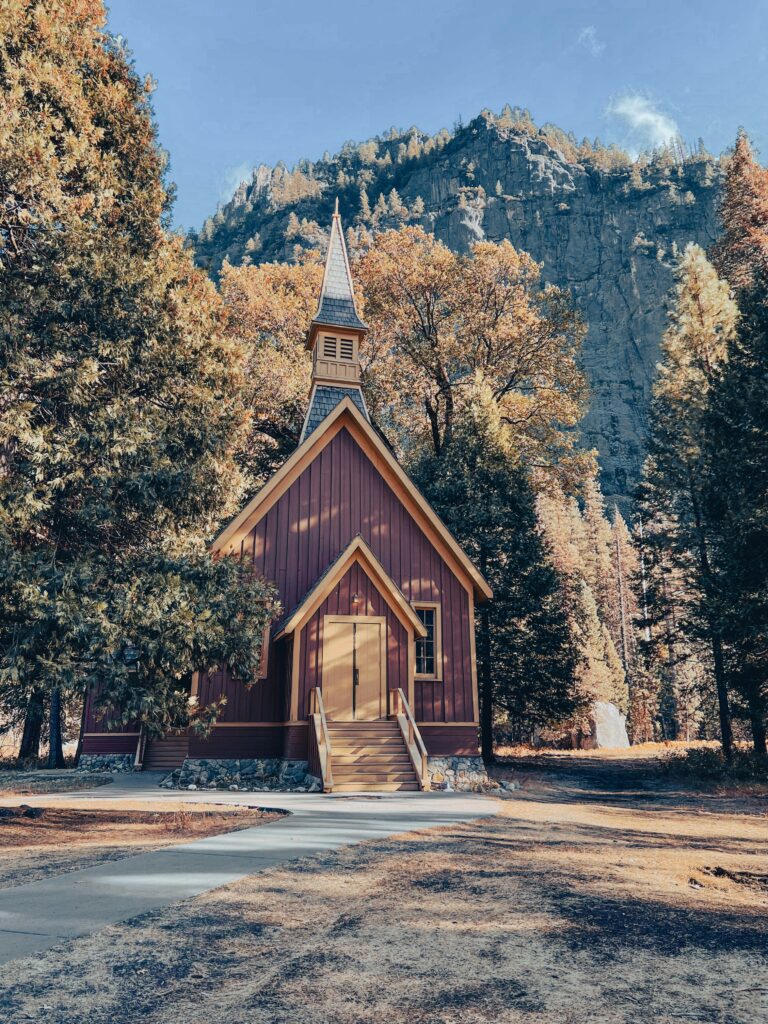
Adventure and Activities in Yosemite
Yosemite National Park offers endless outdoor adventures across its 750,000 acres of wilderness. From scaling towering granite cliffs to peaceful day hikes and winter sports, you'll find activities for every skill level and interest.
Hiking the Trails
The Mist Trail leads you past spectacular waterfalls and offers close-up views of Vernal and Nevada Falls. Pack water-resistant gear as the trail lives up to its name.
The Four Mile Trail provides a challenging 4.8-mile climb from Yosemite Valley to Glacier Point, rewarding you with panoramic views of Half Dome and El Capitan.
For serious hikers, the John Muir Trail stretches 211 miles through the park, connecting Yosemite Valley to Mount Whitney. Plan for multi-day segments or tackle shorter day hikes.
Popular Day Hikes:
- Lower Yosemite Falls (1 mile round trip)
- Mirror Lake Loop (2-5 miles)
- Valley Loop Trail (13 miles)
Rock Climbing for Thrill Seekers
El Capitan and Half Dome attract elite climbers worldwide. You'll find routes for every skill level, from beginner bouldering to advanced multi-pitch climbs.
Camp 4 serves as the traditional climbers' basecamp, offering convenient access to numerous climbing areas and a supportive community of fellow climbers.
Essential Climbing Areas:
- El Capitan
- Half Dome
- Cathedral Rocks
- Sentinel Rock
Backcountry Backpacking
Obtain your wilderness permit before exploring Yosemite's backcountry. The permit system helps protect the wilderness and ensures a true remote experience.
Pack bear-resistant food containers and follow Leave No Trace principles. Rangers recommend storing food properly and camping at least 100 feet from water sources.
The High Sierra Camps provide a unique backcountry experience, offering basic amenities while maintaining wilderness immersion.
Winter Sports and Summer Activities
Winter transforms Yosemite into a snow sports paradise. Badger Pass Ski Area offers downhill skiing, snowboarding, and cross-country trails suitable for beginners and intermediates.
Summer activities include:
- Swimming in designated areas
- Rafting the Merced River (seasonal)
- Bike rentals and cycling
- Rock climbing classes
Ice skating at Curry Village provides family entertainment with stunning views of Half Dome as your backdrop during winter months.
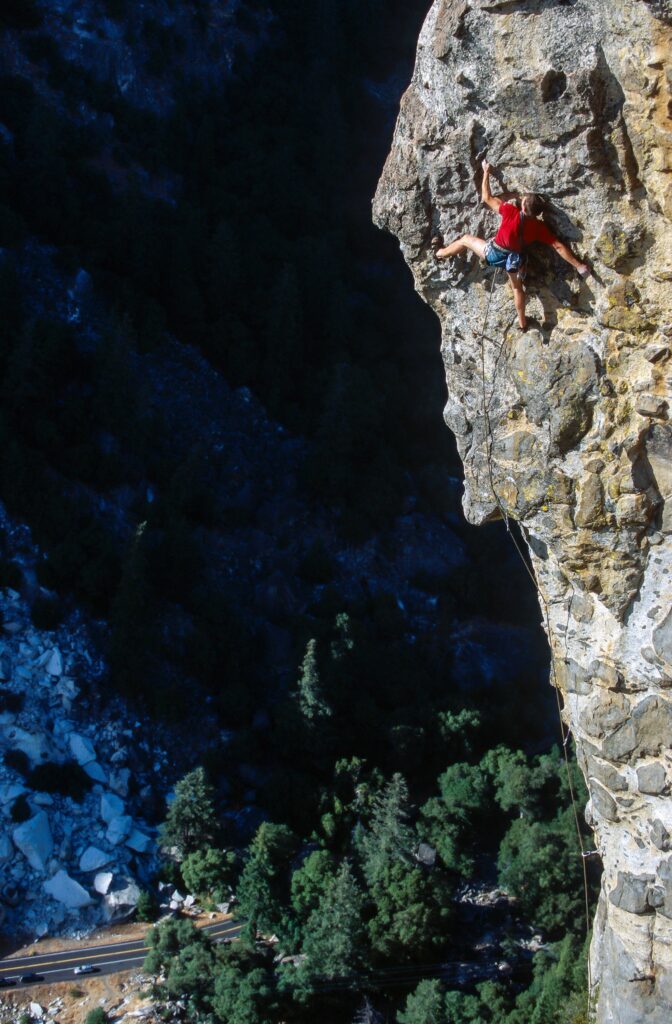
Yosemite's Ecosystem and Wildlife
Yosemite National Park spans 1,169 square miles of diverse ecosystems, from towering granite cliffs to ancient sequoia groves, creating unique habitats for hundreds of species.
The Flora of Yosemite
The park's varied elevations support distinct plant communities. Giant sequoia trees dominate Mariposa Grove, with some specimens reaching ages over 2,000 years old.
Spring brings vibrant wildflower displays to Yosemite Valley's meadows. You'll spot purple lupines, orange California poppies, and yellow monkey flowers dotting the landscape from March through August.
Alpine zones above 8,000 feet feature hardy plants adapted to extreme conditions. Look for white mountain heather and pink mountain pride clinging to rocky outcrops.
Fauna Encounters
American black bears are Yosemite's most famous residents. You're most likely to spot them in meadows and forests during dawn and dusk hours.
The rare Sierra Nevada bighorn sheep inhabit the park's highest elevations. These agile climbers navigate steep granite walls with impressive skill.
Common wildlife sightings include:
- Mule deer in meadows
- Golden-mantled ground squirrels near trails
- Stellar's jays around picnic areas
- Great gray owls in coniferous forests
Remember to maintain a safe distance from all wildlife and never feed any animals.

Cultural Heritage and History
The history of Yosemite spans thousands of years, with deep Native American roots and significant developments in American conservation history.
Indigenous Peoples and Yosemite
The Ahwahneechee people lived in Yosemite Valley for over 4,000 years before European contact. Their name for the valley was “Ahwahnee,” meaning “big mouth” or “gaping mouth-like place.”
Traditional Ahwahneechee practices included seasonal hunting, gathering of acorns and pine nuts, and basket weaving. You can still see evidence of their presence through bedrock mortars used for grinding acorns.
The tribe maintained a complex relationship with the land through controlled burns and sophisticated resource management techniques.
Historic Sites within the Park
The Yosemite Valley Visitor Center serves as your gateway to discovering the park's historic landmarks. Here you'll find exhibits documenting the 1864 Yosemite Grant, which marked the first time the federal government set aside land for public use.
Key historic structures include the Wawona Hotel, dating back to 1879, and the LeConte Memorial Lodge, built in 1903. These buildings represent significant architectural achievements in early park development.
The damming of Hetch Hetchy Valley in 1923 remains a pivotal moment that sparked national debate about conservation versus development.
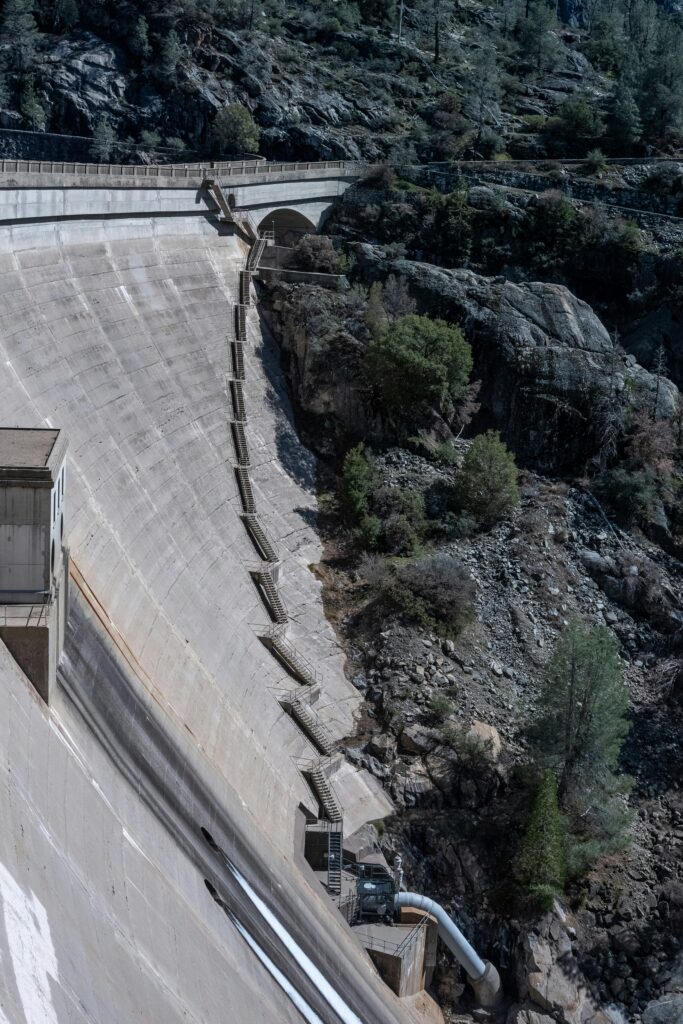
Yosemite's Geographical Wonders
Yosemite's dramatic landscapes showcase nature's raw power through massive granite formations and ice-carved valleys spanning nearly 1,200 square miles within California's Sierra Nevada range.
Glacial Landscapes and High Sierras
The High Sierra region offers breathtaking alpine vistas and meadowlands shaped by ancient glaciers. You'll find Tuolumne Meadows nestled at 8,600 feet elevation, offering pristine grasslands surrounded by granite domes.
Tioga Road provides access to stunning high-country viewpoints. During summer months, you can drive to Olmsted Point for panoramic views of the surrounding peaks and valleys.
Winter transforms these areas dramatically. The Tioga Road closes from November through late May due to heavy snowfall, making the High Sierra accessible only to skilled winter adventurers.
Unique Geological Formations
Half Dome stands as an iconic symbol of Yosemite's grandeur, rising 4,737 feet above the valley floor. Its distinctive rounded shape resulted from glacial action that removed three sides of the original dome.
Glacier Point provides spectacular views of the park's major landmarks. From this vantage point at 7,214 feet, you can see Half Dome, Vernal Falls, and Nevada Falls in one sweeping vista.
The granite cliffs throughout the park feature unique characteristics formed through glacial erosion, creating smooth surfaces and sharp contrasts. These formations include El Capitan, Cathedral Rocks, and Sentinel Rock.
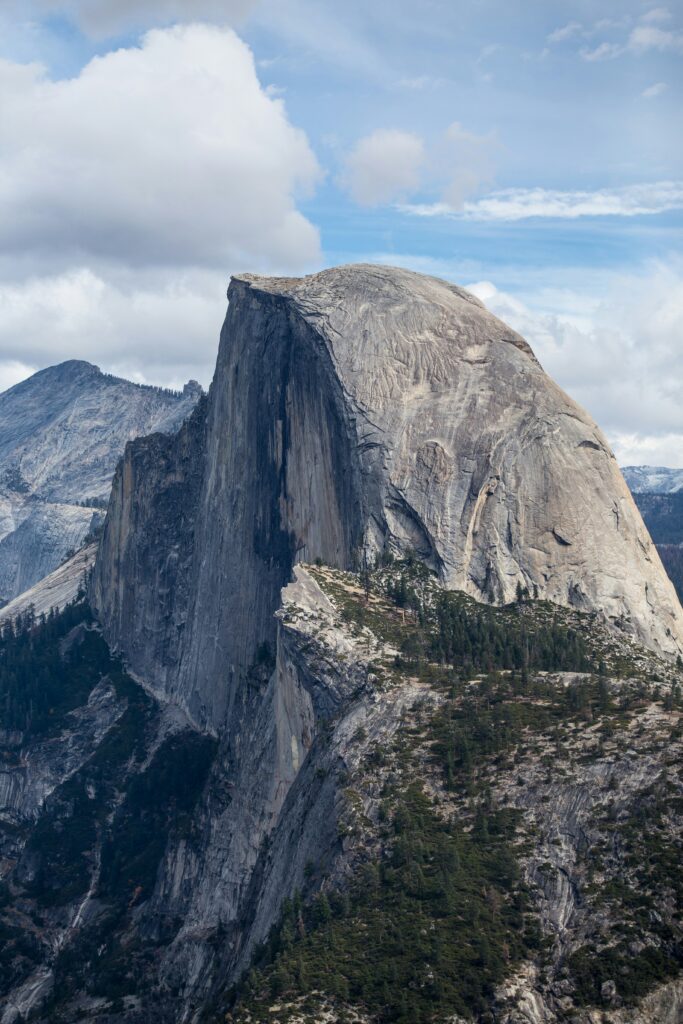
Camping and Lodging in the Park
Yosemite offers diverse accommodation options from rustic campsites to comfortable lodges. You'll find 13 maintained campgrounds spread across the park's vast terrain.
Campgrounds and Backcountry Stays
Upper Pines Campground provides year-round access to Yosemite Valley's major attractions like Half Dome and Mirror Lake. You'll have essential amenities including flush toilets and drinking water.
Camp 4 serves as the traditional climbers' campground, operating on a first-come, first-served basis. This social atmosphere makes it perfect for solo travelers.
Hodgdon Meadow Campground sits near the Big Oak Flat entrance, offering a quieter alternative 45 minutes from the Valley.
For backcountry adventures, you'll need a wilderness permit. These sites provide a more secluded experience away from the developed areas.
Campsite Reservation Tips
Book your campsite up to 5 months in advance through the official reservation system. Sites typically fill within minutes of release.
Peak season runs May through September. Consider visiting in spring or fall for better availability.
Set up multiple devices when booking to increase your chances of securing a spot. The reservation window opens at 7:00 AM Pacific Time.
Keep a flexible schedule – midweek stays are easier to book than weekends.
Check for cancellations regularly, especially 48 hours before your intended stay date.
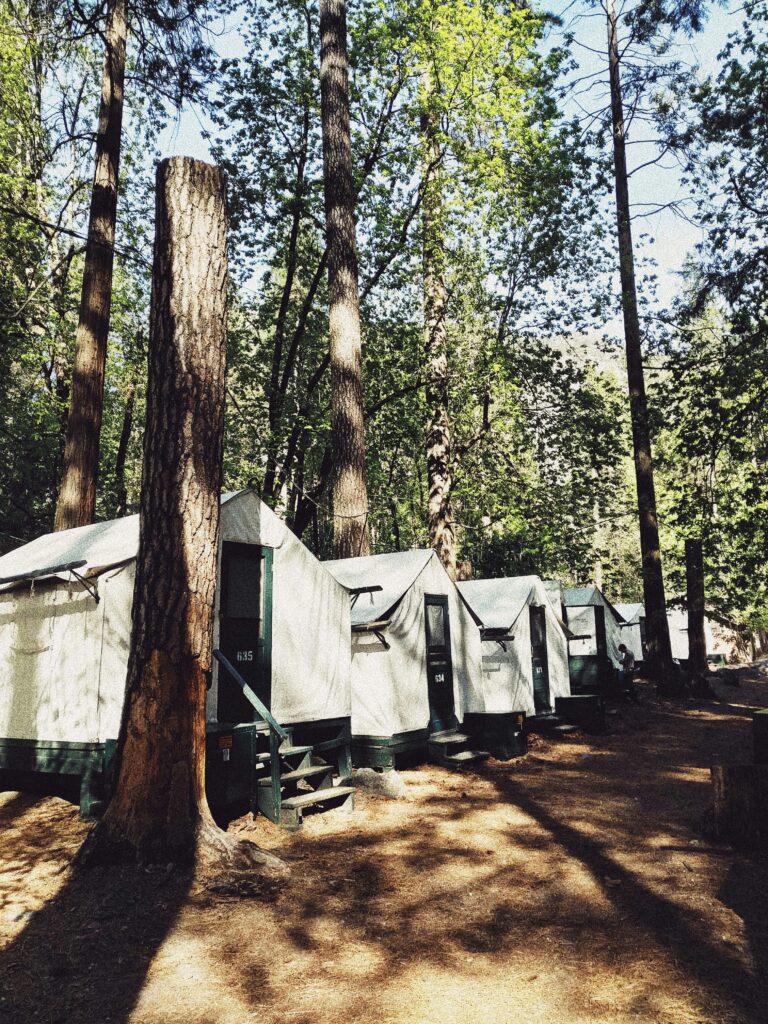
Travel Logistics: Getting to and Around Yosemite
Getting to Yosemite requires careful planning due to its remote location in California's Sierra Nevada mountains. The park offers multiple entrance points and transportation options to suit different travel preferences and schedules.
Routes to Yosemite
Three main entrances serve Yosemite National Park: Big Oak Flat from the west, South Entrance near Fresno, and Tioga Pass from the east. The Tioga Pass entrance closes during winter months due to snow.
You can reach Yosemite by flying into San Francisco, Oakland, or Fresno airports. From there, renting a car offers the most flexibility for exploring the park.
Driving times vary seasonally. Winter conditions often require tire chains, especially from October through April. Plan extra travel time during peak summer months when traffic is heaviest.
Public Transit and Park Shuttles
YARTS (Yosemite Area Regional Transportation System) provides convenient bus service to Yosemite from surrounding communities. Call 877-989-2787 for schedules and booking.
You can combine Amtrak or Greyhound service to Merced with YARTS buses to reach the park without driving.
Bicycles offer an efficient way to explore Yosemite Valley during summer months. The park maintains several miles of paved bike paths, allowing you to bypass traffic congestion.
Free shuttle buses operate within Yosemite Valley year-round, connecting major attractions, lodging, and parking areas. Additional seasonal shuttles serve other popular park destinations.
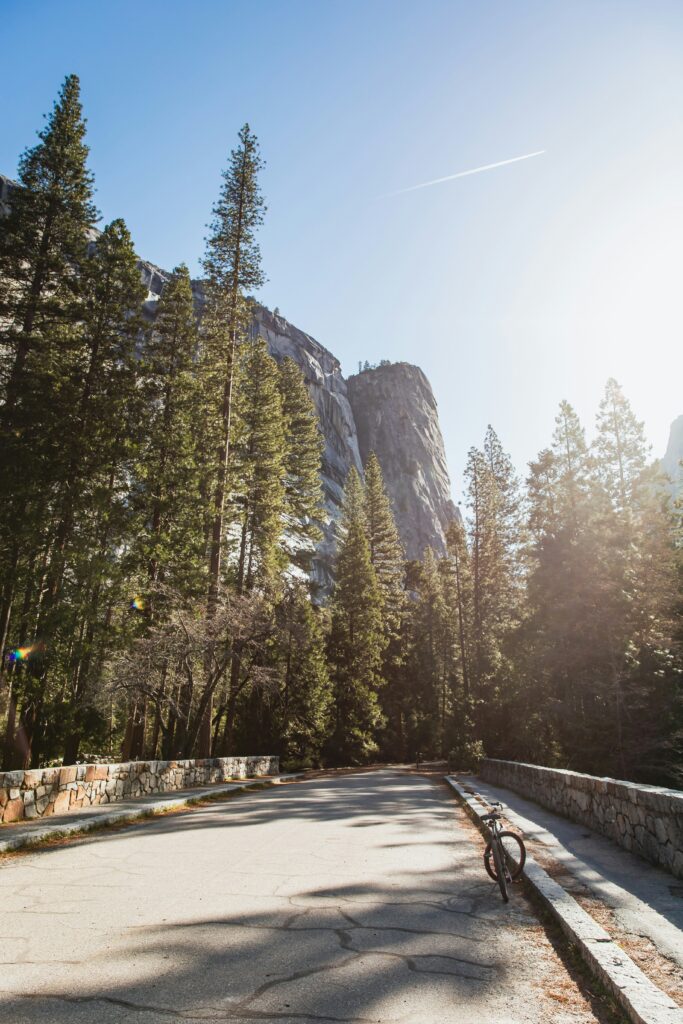
Practical Information for Visitors
Essential knowledge for navigating Yosemite will help you make the most of your visit while staying safe and following park guidelines.
Park Regulations and Safety
Park permits and reservations are required during peak seasons between March and October. Book at least 3 months in advance to secure your spot.
Stay at least 100 feet from wildlife and never feed them. Bears are active in the park – store food properly in bear-proof containers.
The altitude ranges from 2,000 to 13,000 feet. Take time to acclimate and bring plenty of water. Weather can change rapidly – check forecasts and dress in layers.
Facilities and Visitor Services
The Yosemite Valley Visitor Center provides maps, exhibits, and ranger guidance. Operating hours are 9 AM to 5 PM daily.
Free shuttle buses run throughout Yosemite Valley and popular areas. Service frequency varies by season.
Public restrooms and water stations are available at major viewpoints and trailheads. Cell service is limited outside developed areas.
The park offers lodging options from luxury hotels to basic campgrounds. Make reservations well in advance, especially for summer stays.
Some roads, including Glacier Point Road, close seasonally due to snow. Check current conditions before your visit.

